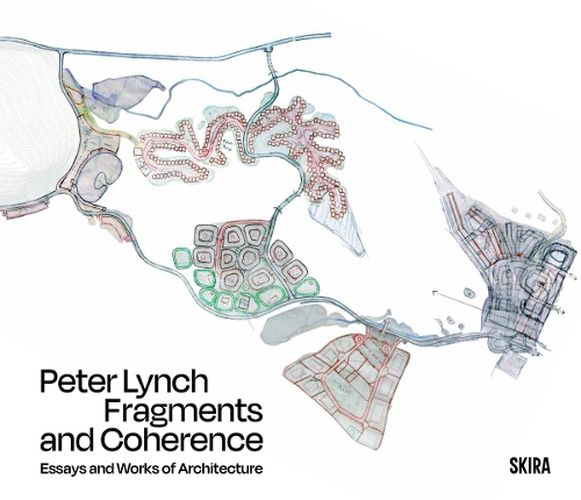Readings Newsletter
Become a Readings Member to make your shopping experience even easier.
Sign in or sign up for free!
You’re not far away from qualifying for FREE standard shipping within Australia
You’ve qualified for FREE standard shipping within Australia
The cart is loading…






Drawing from multiple disciplines, architect Peter Lynch describes a distinct approach to design and composition-what he terms "holding together".
Fragments and Coherence is a monograph of original projects and a gentle manifesto on complexity and coherence in architecture. Peter Lynch, former Architect-in-Residence at Cranbrook Academy of Art and Guest Professor at KTH Royal Institute of Technology, presents twenty key projects from three decades of design practice in New York, Beijing, and Stockholm. In project descriptions and essays Peter Lynch examines works of architecture, landscape design, music, literature, and painting that have been fashioned through "holding together"- an approach to composition that derives the structure of a work from the character of its parts. Beethoven's Late Quartets, T.S. Eliot's poem "The Waste Land," Marcel Duchamp's "The Large Glass," Hadrian's Villa, the Yuanmingyuan, Eileen Gray's Villa E-1027, John Hejduk's "Victims" projects, and Peter Lynch's own Timescape Garden are some examples. The author proposes a relationship between this way of making things and philosopher Giorgio Agamben's notion of singularity. Works made up of disjunct elements, reconciled with each other according to their natures, are often singular: examples of themselves alone, not encompassed by any category or rule.
$9.00 standard shipping within Australia
FREE standard shipping within Australia for orders over $100.00
Express & International shipping calculated at checkout
Stock availability can be subject to change without notice. We recommend calling the shop or contacting our online team to check availability of low stock items. Please see our Shopping Online page for more details.
Drawing from multiple disciplines, architect Peter Lynch describes a distinct approach to design and composition-what he terms "holding together".
Fragments and Coherence is a monograph of original projects and a gentle manifesto on complexity and coherence in architecture. Peter Lynch, former Architect-in-Residence at Cranbrook Academy of Art and Guest Professor at KTH Royal Institute of Technology, presents twenty key projects from three decades of design practice in New York, Beijing, and Stockholm. In project descriptions and essays Peter Lynch examines works of architecture, landscape design, music, literature, and painting that have been fashioned through "holding together"- an approach to composition that derives the structure of a work from the character of its parts. Beethoven's Late Quartets, T.S. Eliot's poem "The Waste Land," Marcel Duchamp's "The Large Glass," Hadrian's Villa, the Yuanmingyuan, Eileen Gray's Villa E-1027, John Hejduk's "Victims" projects, and Peter Lynch's own Timescape Garden are some examples. The author proposes a relationship between this way of making things and philosopher Giorgio Agamben's notion of singularity. Works made up of disjunct elements, reconciled with each other according to their natures, are often singular: examples of themselves alone, not encompassed by any category or rule.